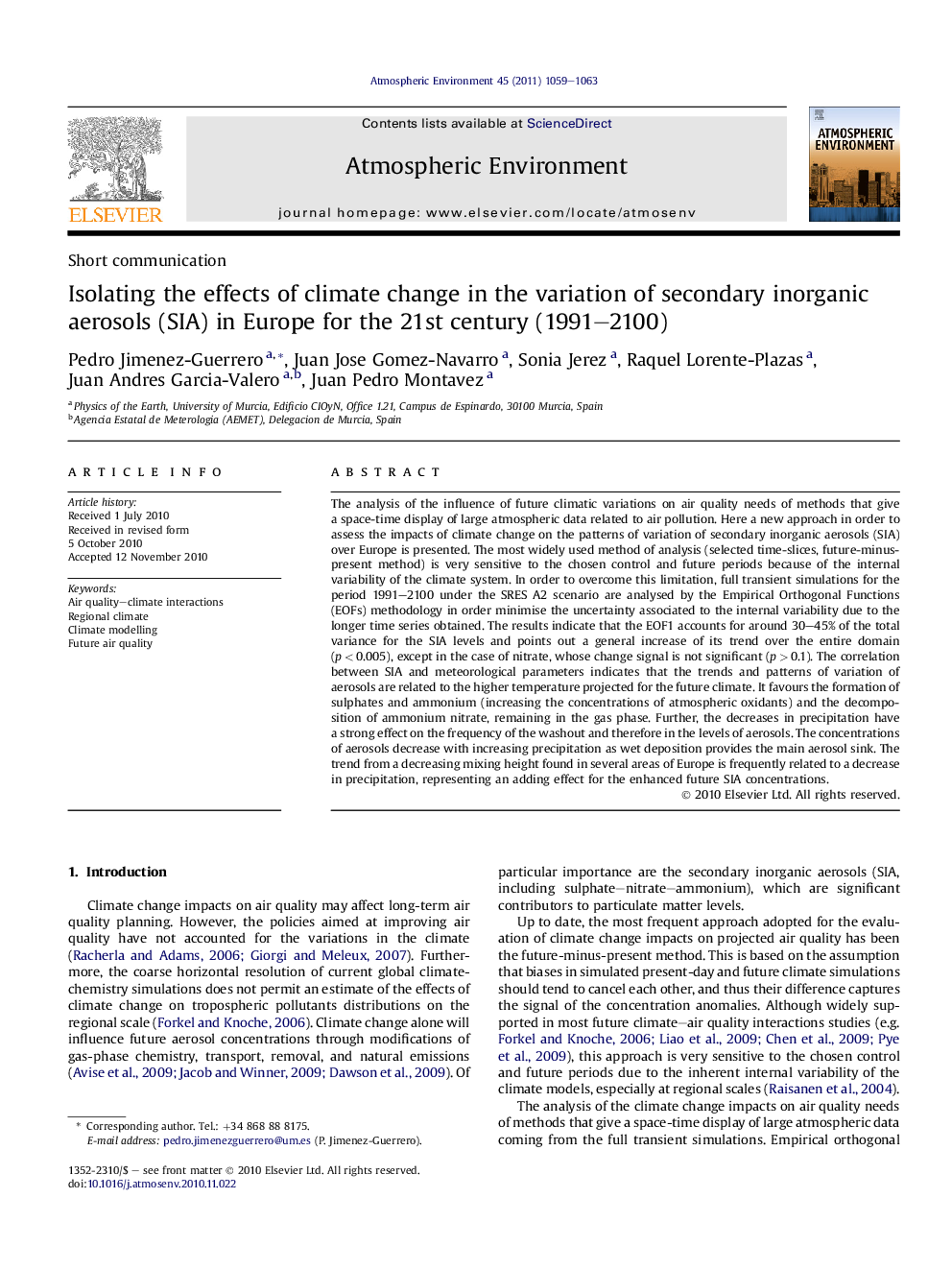| کد مقاله | کد نشریه | سال انتشار | مقاله انگلیسی | نسخه تمام متن |
|---|---|---|---|---|
| 4440260 | 1311052 | 2011 | 5 صفحه PDF | دانلود رایگان |

The analysis of the influence of future climatic variations on air quality needs of methods that give a space-time display of large atmospheric data related to air pollution. Here a new approach in order to assess the impacts of climate change on the patterns of variation of secondary inorganic aerosols (SIA) over Europe is presented. The most widely used method of analysis (selected time-slices, future-minus-present method) is very sensitive to the chosen control and future periods because of the internal variability of the climate system. In order to overcome this limitation, full transient simulations for the period 1991–2100 under the SRES A2 scenario are analysed by the Empirical Orthogonal Functions (EOFs) methodology in order minimise the uncertainty associated to the internal variability due to the longer time series obtained. The results indicate that the EOF1 accounts for around 30–45% of the total variance for the SIA levels and points out a general increase of its trend over the entire domain (p < 0.005), except in the case of nitrate, whose change signal is not significant (p > 0.1). The correlation between SIA and meteorological parameters indicates that the trends and patterns of variation of aerosols are related to the higher temperature projected for the future climate. It favours the formation of sulphates and ammonium (increasing the concentrations of atmospheric oxidants) and the decomposition of ammonium nitrate, remaining in the gas phase. Further, the decreases in precipitation have a strong effect on the frequency of the washout and therefore in the levels of aerosols. The concentrations of aerosols decrease with increasing precipitation as wet deposition provides the main aerosol sink. The trend from a decreasing mixing height found in several areas of Europe is frequently related to a decrease in precipitation, representing an adding effect for the enhanced future SIA concentrations.
Research highlights
► The spatio-temporal patterns of variability for secondary inorganic aerosols (SIA) under a changing climate are determined.
► Full transient simulations for the period 1991–2100 (SRES A2) are analysed by the Empirical Orthogonal Functions (EOFs) methodology.
► The EOFs analysis allows filtering the change signal of SIA and to identify their patterns of variability.
► Climatic change will impact air quality by increasing the mean concentrations of these aerosol components matter in most regions over Europe.
Journal: Atmospheric Environment - Volume 45, Issue 4, February 2011, Pages 1059–1063